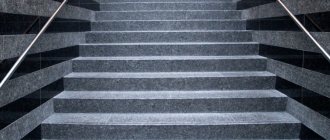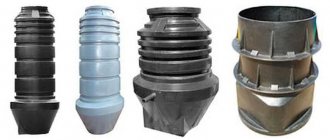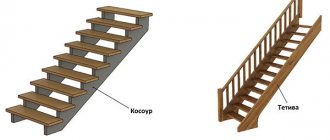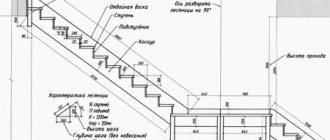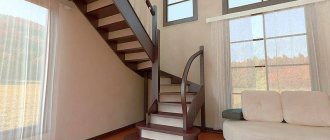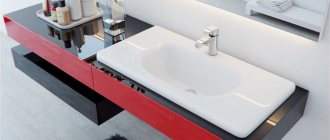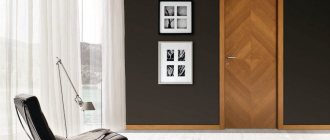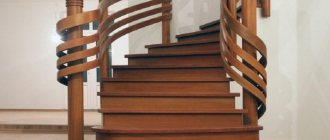About stairs
Website about stairs. We combine the experience of professionals and private craftsmen in one place
Popular
1 person discussing
Stainless steel staircase to the pool: characteristics, models, manufacturing instructions
4 people discussing
Staircases in Art Nouveau style: tips for creating a style
Wooden staircase on a slope - making your site comfortable and beautiful
How to assemble a wooden staircase - yourself and from ready-made elements
Finishing a monolithic staircase: considering possible options
Do-it-yourself staircase to the attic - installation of a stationary structure
Production of wooden stairs: ideas for small businesses and more
Iron staircase to the second floor - cold metal as an addition to home comfort
Do-it-yourself staircase in a wooden house - bringing beauty and comfort to the masses
Unusual and original stairs to a private house - choose your option
A riser is an excellent opportunity to add style to the structure.
No residential building is complete without such a functional structure as a staircase. It doesn’t matter whether it’s porch steps, an interfloor passage, or the possibility of a fire exit. Stairs are structures that are practically mandatory in any building, used for vertical movement, as well as for connecting multi-level rooms.
In our article we will analyze what elements form the structure, what risers are in a staircase, and whether they are mandatory for the device. Let's learn how to design stairs with convenient and safe dimensions, and find out exactly how the relationship between steps and risers is related.
- Standards and regulations GOSTs
- Shape of steps
- Safety formula
- Concrete
Main varieties
There are two types of such structures in private two- and three-story houses: screw and marching. The latter type of stairs has a solid appearance and is considered more convenient to use. At the same time, screw structures take up less space in the building. They are usually installed in rooms that are not too large in area.
In any case, the main element of any staircase is the steps. When designing this part of the lifting structure, special attention is usually paid.
Expert advice
When building high-quality stairs, every craftsman must adhere to some recommendations, thanks to which you can build a durable staircase without any flaws . The following tips are most important:
- If the master has lost a special wedge, then the main element can be safely supported on a massive block. All flat parts must overlap. This will allow them to slightly overlap each other. The final width may differ in those places that are used as support for both legs. To install a high-quality fence, you need to carefully drill small holes along the edges of the steps.
- If you need to replace a failed tread, then you should gradually dismantle all the old flat parts of the lifting structure that are located on top. It is important to ensure that the main wedge does not move during use.
- Increased attention should be paid to the installation of the last and first steps. Installation of powerful support brackets should be carried out between the wide parts of the tread. The very last step must be secured using standard fasteners.
- If a master works with a spiral type of staircase, then all construction work must be carried out in a certain sequence. The installation of the tread and bushings must be carried out after the very central post has been mounted and secured. Only when all the flat parts are secured do they carefully unfold into a fan shape. Each element should be located around the circle, occupying its standard place.
If the interior of the room is made in a universal avant-garde style, then the risers will be an extra decorative element, reminiscent of a bygone time. The trendy design of a room with a staircase looks great without such design details. To visually increase the space, risers can be made of transparent glass, thereby increasing the safety of the structure.
In a modern interior, treads are presented with more advanced, light and elegant details, due to which you can profitably transform any room.
What are treads and risers
The steps of the stairs must, firstly, be deep enough for a person’s foot to fit on them. Secondly, they should not be too low or, conversely, high. Otherwise, moving up the stairs will be inconvenient and dangerous. The steps consist of two main elements:
- treads located vertically;
- risers located horizontally.
When moving up the stairs, a person’s foot rests on the tread. Risers are considered an additional element. In the design of the stairs they play a mainly decorative role. With them, marches look more solid and safe.
Sometimes the house is equipped with stairs without risers. Such designs are cheaper. But when designing a staircase without risers, maximum attention should be paid to its design. Otherwise, such a design will not look very attractive.
Configurations
Winder stairs are divided into several main (classic) types according to configuration:
- L-shaped / L-shaped. Stairs with a 90° turn with one or two straight flights.
- U-shaped / U-shaped. Stairs with a 180° turn with two or three straight flights.
- S-shaped / Z-shaped. Stairs with double 90° turns and three straight flights.
- C-shaped. Semi-spiral staircases with a 180° turn and two straight flights. They differ from U-shaped ones by a smooth turning line from the outside.
The most common in the private sector are L- and U-shaped stairs, the rest are special cases and are used extremely rarely.
Staircase dimensions. Safety formula
What should be the steps of any home lifting structure? When designing a staircase, the safety formula should be taken into account first. It looks like this:
- 2h + b = S(63 ± 3 cm).
Here h is the height of the riser, b is the width of the tread, S is the length of the person’s step. The last parameter is on average 63 cm. Thus, when the riser height h increases by 1 cm, the tread width must be reduced by 2 cm.
Ready-made designs
Many staircase manufacturers, given the great demand, produce modular structures. When purchasing them, the overall dimensions are immediately known, and based on them, you can install the winder staircase in the prepared opening.
The standard sizes of structures are different:
- rotation angle 90° or 180°;
- lifting height 2100-2350 mm;
- opening 800x1200-1800x2700 mm;
- staircase width - 700-900 mm;
- cost - 25-170 thousand rubles.
Various tree species are used for production - pine, oak, beech, birch, ash. Decorative processing - tinting, painting with colored compounds, impregnation with wax or oil, varnishing, brushing (artificial aging), artistic carving.
When choosing a slope, pay attention to the ceiling height
The frame can be not only wooden, but also metal. Parts are most often assembled using bolts, but welding or riveting is also possible. Painting is either factory or at the request of the customer.
Some designs are universal, that is, they provide for the possibility of modeling in space. This is convenient, because having an opening of a given size, you can install the staircase you like at home.
Drawing of a metal staircase on one stringer
To satisfy the aesthetic needs of buyers, manufacturers provide a choice of fencing designs - balusters, entry posts, railings and various decorations. As additional functionality, it is possible to install child gates and lighting with a motion sensor.
The advantages of ready-made stairs are high calculation accuracy, compliance with design standards, high-quality wood processing and the ability to quickly assemble the structure on site without lengthy adjustments. Disadvantages - not suitable for rooms with non-standard sizes, rather high price.
Step sizes. Standards
According to the rules stipulated by SNiP, in order for a staircase to be safe, the height of its risers should not be less than 15 cm and more than 18 cm. The minimum tread width is 29-30 cm.
Such parameters are provided for the main stairs in the house. When designing auxiliary lifting structures (attics and basements), since they are not used very often, such strict rules are usually not followed. But even for such stairs, the lengths and heights of the steps must comply with certain standards.
So, for example, the height of the risers for attic and basement structures should be approximately 17.1 cm. The width of the treads for stairs of this type should not be less than 26 cm.
The minimum step length (flight width) of a conventional interfloor lifting structure is considered to be 90 cm. In this case, 2 people can easily separate on the stairs. Attic and basement flights can be narrower.
Decor options
Depending on what material is chosen for the basic structure, the steps require different cladding. The exception is wooden stairs, since wood is also a very attractive decorative finish. Below we will provide several photos, possible designs and demonstrate what to make risers on the stairs from.
Concrete
Being the most durable structurally, this material requires mandatory decoration. In this situation, the cladding performs the additional function of protecting the solution from moisture. However, the price, as a rule, does not affect the protective qualities.
Metal
This material is most often used for constructing open steps. The metal frame is rigid and durable, and only requires the installation of walking platforms without risers, while making it possible to maintain the unity of space.
You can learn more about the structure of a metal staircase with open steps by watching the video in this article.
Spiral staircase steps
The standards discussed above are valid mainly for staircases. When designing their risers and treads, you should be especially careful. The same applies, of course, to spiral staircases. Structures of this type most often do not have risers at all. At the same time, the treads on stairs of this type have a trapezoidal shape. When designing screw structures, the following standards should be taken into account:
- the width of the tread in the middle should not be less than 20-25 cm;
- the minimum tread width at a distance of 15 cm from the stand is 10 cm;
- on the edge farthest from the counter, the width of the tread should not exceed 40 cm;
- riser height (step rise) - 15-20 cm.
The optimal length of the steps of a spiral staircase, as well as a marching staircase, is considered to be 90 cm.
Common mistakes
Before you start building a staircase, you need to study in detail the most common mistakes made by craftsmen. The experts themselves note the following errors:
- Different size of steps. Even small deviations in width and height can cause injury to people. The unequal size of steps disrupts the natural rhythm of a person’s walking.
- Wrong height. Current standards stipulate that this parameter should not exceed 180 mm. High steps will cause a lot of discomfort for elderly people and children. It is worth noting that if the layout of the room does not allow compliance with such rules, then the final size of the products can be increased to a maximum of 20 centimeters.
Tilt angle
Steps with their basic elements - risers and treads - are thus the main part of any staircase. If they are designed correctly, the lifting structure can already be considered quite comfortable for movement. But the marches of such structures themselves must, of course, be safe. Their minimum width, as already mentioned, is 90 cm. When designing flight stairs, their angle of inclination should also be observed:
- for standard interfloor - 30-45 degrees;
- for attic, basement and temporary spaces - 45-75 degrees;
- for porches - 30 degrees;
- for attached structures - over 75 degrees.
Number of steps and marches
Flights of stairs should not be too short or long. It is also believed that it is best if the number of steps in them is odd. People are usually much more comfortable starting and finishing the movement on one leg.
However, this rule is optional. The shortest stairs usually have 3 steps. The longest flights consist of 18. If this length of the staircase is not enough, it is divided into two halves, between which a platform is arranged.
It is believed that the distance between flights of rotating counter structures in a house should be at least 5 cm. If the handrails of the railing are located close to the stringers or bowstrings of the upper part of the stairs, people moving along it may injure their fingers.
Calculation tools
Once upon a time, people made passages to the upper floors using a hacksaw and a screwdriver. Today in construction stores there are many tools with which staircase structures are built.
But first of all, you need to outline the details on paper. To do this, you will need a rigid ruler, a rod, and a protractor. To place parts correctly and accurately, it will be better to print drawings at a 1:1 scale or order them. But if the staircase is made with your own hands, then you will also have to do the calculation yourself. To simplify calculations, you can use staircase designers or staircase calculators.
It is necessary to take into account the advice of professionals and carry out all work exactly according to the developed scheme.
